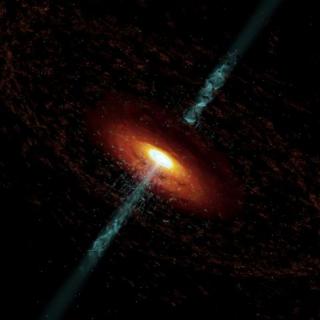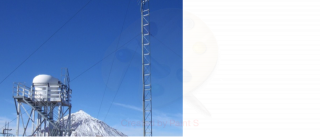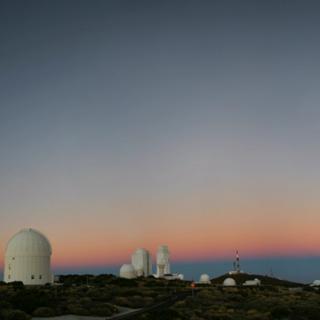Subvenciones relacionadas:
General
Nuestro proyecto puede dividirse en dos líneas principales de investigación. En primer lugar, el estudio de los vientos producidos por cuásares luminosos oscurecidos y del impacto que estos tienen en sus galaxias anfitrionas (retroalimentación del AGN). Para ello hemos obtenido observaciones infrarrojas y ópticas con los instrumentos del Gran Telescopio CANARIAS (GTC) CanariCam, EMIR y MEGARA, así como datos de ALMA en el rango milimétrico. Parte de esta investigación la realizamos en el marco de la Innovative Training Network BID4BEST, del programa H2020. Nuestro grupo está también fuertemente involucrado en el consorcio internacional GATOS (Galactic Activity, Torus and Outflow Survey), creado con el objetivo de conseguir tiempo en el JWST y ALMA para caracterizar el ciclo del gas y el material que oscurece el núcleo de galaxias activas cercanas. En segundo lugar, nuestra actividad se centra en la aplicación de la espectroscopia de campo integral al estudio de objetos extensos tales como galaxias con formación estelar o galaxias activas para investigar el encendido de ambos fenómenos. Asimismo, contribuimos al desarrollo de nuevos instrumentos y técnicas de análisis de datos relacionadas con la espectroscopia 3D. En particular, participamos en el desarrollo del espectrógrafo de campo integral de alta resolución HARMONI, uno de los instrumentos de primera luz del Extremely Large Telescope de la ESO.
Miembros
Resultados
-
Publicación de una letter en MNRAS donde estudiamos la conexión entre los vientos de gas ionizado y las poblaciones estelares jóvenes en el cuásar de tipo 2 Mrk 34 (Bessiere & Ramos Almeida 2022). Encontramos evidencias de retroalimentación positiva y negativa en distintas partes de la misma galaxia, inducidas por el viento. Este trabajo, parte del proyecto QSOFEED, abre una nueva ventana a la investigación del impacto directo de la actividad nuclear en la formación estelar en galaxias.
-
Publicación de un estudio detallado sobre la cinemática del gas ionizado y molecular templado en el cuásar de tipo 2 J0945+1737, parte de la muestra QSOFEED (Speranza et al. 2022). Encontramos evidencias de un viento de gas ionizado con un outflow mass rate máximo de 51 Msun/yr, y ausencia de su contrapartida de gas molecular templado.
-
La red europea H2020-ITN-2019 "Big Data Applications for Black Hole Evolution Studies" (BID4BEST) comenzó el 1 de marzo de 2020 (fecha de fin febrero 2024). La doctoranda Giovanna Speranza se unió a nuestro grupo en Septiembre de 2020.
-
La financiación externa conseguida por C. Ramos Almeida (452.000 euros) y B. García Lorenzo (700.000 euros) en el marco de este proyecto asciende a 1.152.000 euros. Estos fondos sólo incluyen aquellos proyectos cuya fecha de inicio es 2020 y posterior, y la mayor parte de ellos se ha invertido en la contratación de nuevo personal científico y técnico.
-
Publicación de los dos primeros artículos basados en la muestra de GATOS (García-Burillo et al. 2021; Alonso-Herrero et al. 2021). La colaboración GATOS ha obtenido dos propuestas aprobadas en el Ciclo 1 del JWST, lideradas por D. Rosario (University of Newcastle, Reino Unido) y Taro Shimizu (MPE, Alemania).
-
Publicación de un estudio sobre morfología y cinemática del gas molecular frío de una muestra de cuásares de tipo 2 (QSO2s) a z=0.1 (Ramos Almeida et al. 2022). Para ello se hizo uso de datos del interferómetro ALMA en el rango milimétrico. Este trabajo es parte del proyecto QSOFEED.
-
Publicación del trabajo García-Lorenzo et al. (2022), en el cual se presenta un análisis de las capacidades de HARMONI para desentrañar las propiedades morfo-cinemáticas de las galaxias anfitrionas de AGN en el llamado "mediodía cósmico".
Actividad científica
Publicaciones relacionadas
-
Deep Herschel observations of the 2 Jy sample: assessing the non-thermal and AGN contributions to the far-IR continuum
The far-IR/sub-mm wavelength range contains a wealth of diagnostic information that is important for understanding the role of active galactic nuclei (AGN) in galaxy evolution. Here we present the results of Herschel PACS and SPIRE observations of a complete sample of 46 powerful 2 Jy radio AGN at intermediate redshifts (0.05 < z < 0.7), which
Dicken, D. et al.Fecha de publicación:
32023 -
Absence of nuclear polycyclic aromatic hydrocarbon emission from a compact starburst: The case of the type-2 quasar Mrk 477
Mrk 477 is the closest type-2 quasar, at a distance of 163 Mpc. This makes it an ideal laboratory for studying the interplay between nuclear activity and star formation with a great level of detail and signal-to-noise. In this Letter we present new mid-infrared (mid-IR) imaging and spectroscopic data with an angular resolution of 0.4″ (∼300 pc)
Ramos Almeida, C. et al.Fecha de publicación:
12023 -
The demographics of obscured AGN from X-ray spectroscopy guided by multiwavelength information
A complete census of active galactic nuclei (AGNs) is a prerequisite for understanding the growth of supermassive black holes across cosmic time. A significant challenge towards this goal is the whereabouts of heavily obscured AGN that remain uncertain. This paper sets new constraints on the demographics of this population by developing a
Laloux, Brivael et al.Fecha de publicación:
12023 -
CO in the ALMA Radio-source Catalogue (ARC): The molecular gas content of radio galaxies as a function of redshift
To evaluate the role of radio activity in galaxy evolution, we designed a large archival CO survey of radio galaxies (RGs) to determine their molecular gas masses at different epochs. We used a sample of 120 RGs representative of the NVSS 1.4 GHz survey, when flux limited at 0.4 Jy. Of those, 66 galaxies belonged to the ALMA Radio-source Catalogue
Audibert, A. et al.Fecha de publicación:
122022 -
Torus and polar dust dependence on active galactic nucleus properties
We present a statistical analysis of the properties of the obscuring material around active galactic nuclei (AGN). This study represents the first of its kind for an ultra-hard X-ray (14-195 keV; Swift/BAT), volume-limited (D L < 40 Mpc) sample of 24 Seyfert (Sy) galaxies (BCS 40 sample) using high angular resolution infrared data and various torus
García-Bernete, I. et al.Fecha de publicación:
112022 -
The stellar populations of quiescent ultra-diffuse galaxies from optical to mid-infrared spectral energy distribution fitting
We use spectral energy distribution (SED) fitting to place constraints on the stellar population properties of 29 quiescent ultra-diffuse galaxies (UDGs) across different environments. We use the fully Bayesian routine PROSPECTOR coupled with archival data in the optical, near, and mid-infrared from Spitzer and Wide-field Infrared Survey Explorer
Buzzo, Maria Luisa et al.Fecha de publicación:
122022 -
A high angular resolution view of the PAH emission in Seyfert galaxies using JWST/MRS data
Polycyclic aromatic hydrocarbons (PAHs) are carbon-based molecules that are ubiquitous in a variety of astrophysical objects and environments. In this work we use JWST/MIRI MRS spectroscopy of three Seyferts to compare their nuclear PAH emission with that of star-forming (SF) regions. This study represents the first of its kind to use sub-arcsecond
García-Bernete, I. et al.Fecha de publicación:
102022 -
Low-power jet-interstellar medium interaction in NGC 7319 revealed by JWST/MIRI MRS
We present JWST/MIRI MRS spectroscopy of NGC 7319, the largest galaxy in the Stephan's Quintet, observed as part of the Early Release Observations (ERO). NGC 7319 hosts a type 2 active galactic nucleus (AGN) and a low-power radio jet (L 1.4 GHz = 3.3 × 10 22 W Hz −1) with two asymmetric radio hotspots at 430 pc (N2) and 1.5 kpc (S2) projected
Pereira-Santaella, M. et al.Fecha de publicación:
92022 -
Warm molecular and ionized gas kinematics in the type-2 quasar J0945+1737
We analyse Near-Infrared Integral Field Spectrograph (NIFS) observations of the type-2 quasar (QSO2) SDSS J094521.33+173753.2 to investigate its warm molecular and ionized gas kinematics. This QSO2 has a bolometric luminosity of 10 45.7 erg s −1 and a redshift of z = 0.128. The K-band spectra provided by NIFS cover a range of 1.99-2.40 μm where low
Speranza, G. et al.Fecha de publicación:
92022 -
Unexplored outflows in nearby low luminosity AGNs. The case of NGC 1052
Context. Multi-phase outflows play a central role in galaxy evolution shaping the properties of galaxies. Understanding outflows and their effects in low luminosity active galactic nuclei (AGNs), such as low ionisation nuclear emission line regions (LINERs), is essential. LINERs bridge the gap between normal and active galaxies, being the most
Cazzoli, S. et al.Fecha de publicación:
82022 -
Lessons from the massive relic NGC 1277: Remaining in situstar formation in the cores of massive galaxies
Near-ultraviolet (NUV) spectroscopic studies have suggested that passively evolving massive, early-type galaxies host sub-one per cent fractions of young stars in their innermost regions. We shed light on the origin of these stars by analysing NGC 1277, a widely studied nearby prototypical massive compact relic galaxy. These are rare galaxies that
Salvador-Rusiñol, N. et al.Fecha de publicación:
92022 -
BASS. XXIX. The Near-infrared View of the Broad-line Region (BLR): The Effects of Obscuration in BLR Characterization
Virial black hole (BH) mass (M BH) determination directly involves knowing the broad-line region (BLR) clouds' velocity distribution, their distance from the central supermassive BH (R BLR), and the virial factor (f). Understanding whether biases arise in M BH estimation with increasing obscuration is possible only by studying a large (N > 100)
Ricci, Federica et al.Fecha de publicación:
72022 -
BASS. XXV. DR2 Broad-line-based Black Hole Mass Estimates and Biases from Obscuration
We present measurements of broad emission lines and virial estimates of supermassive black hole masses (M BH) for a large sample of ultrahard X-ray-selected active galactic nuclei (AGNs) as part of the second data release of the BAT AGN Spectroscopic Survey (BASS/DR2). Our catalog includes M BH estimates for a total of 689 AGNs, determined from the
Mejía-Restrepo, Julian E. et al.Fecha de publicación:
72022 -
Testing the role of AGN on the star formation and metal enrichment of 'twin galaxies'
We explore the effect of AGN activity on the star formation history of galaxies by analysing the stellar population properties of 10 pairs of nearby twin galaxies - selected as being visually similar except for the presence of an AGN. The selection of such twin samples represents a method to study AGN feedback, as recently proposed by del Moral
Angthopo, J. et al.Fecha de publicación:
92022 -
The MURALES survey. VI. Properties and origin of the extended line emission structures in radio galaxies
This is the sixth paper presenting the results of the MUse RAdio Loud Emission line Snapshot survey. We observed 37 radio sources from the 3C sample with z < 0.3 and a declination < 20° with the Multi Unit Spectroscopic Explorer optical integral field spectrograph at the Very Large Telescope. Here, we focus on the properties of the extended
Balmaverde, B. et al.Fecha de publicación:
62022 -
Spatially resolved evidence of the impact of quasar-driven outflows on recent star formation: the case of Mrk 34
We present the results of our spatially resolved investigation into the interplay between the ages of the stellar populations and the kinematics of the warm ionized outflows in the well-studied type II quasar Markarian 34 (Mrk 34). Utilizing integral field spectroscopy data, we determine the spatial distribution of the young stellar population (YSP
Bessiere, P. S. et al.Fecha de publicación:
52022 -
Low-metallicity globular clusters in the low-mass isolated spiral galaxy NGC 2403
The globular cluster (GC) systems of low-mass late-type galaxies, such as NGC 2403, have been poorly studied to date. As a low mass galaxy (M * = 7 × 10 9 M ⊙), cosmological simulations predict NGC 2403 to contain few, if any, accreted GCs. It is also isolated, with a remarkably undisturbed HI disc. Based on candidates from the literature, Sloan
Forbes, Duncan A. et al.Fecha de publicación:
52022 -
Quantifying the cool ISM in radio AGNs: evidence for late-time retriggering by galaxy mergers and interactions
We use deep Herschel observations of the complete 2Jy sample of powerful radio active galactic nuclei (AGNs) in the local Universe (0.05 < z < 0.7) to probe their cool interstellar medium (ISM) contents and star-forming properties, comparing them against other samples of nearby luminous AGNs and quiescent galaxies. This allows us to investigate
Bernhard, E. et al.Fecha de publicación:
52022 -
HARMONI view of the host galaxies of active galactic nuclei around cosmic noon. Resolved stellar morpho-kinematics and the M<SUB>BH</SUB> − σ<SUB>⋆</SUB> relation
Context. The formation and evolution of galaxies appear linked to the growth of supermassive black holes, as evidenced by empirical scaling relations in nearby galaxies. Understanding this co-evolution over cosmic time requires the revelation of the dynamical state of galaxies and the measurement of the mass of their central black holes (M BH) at a
García-Lorenzo, B. et al.Fecha de publicación:
32022 -
The Complex Infrared Dust Continuum Emission of NGC 1068: Ground-based N- and Q-band Spectroscopy and New Radiative Transfer Models
Thanks to ground-based infrared and submillimeter observations the study of the dusty torus of nearby active galactic nuclei has greatly advanced in the last years. With the aim of further investigating the nuclear mid-infrared emission of the archetypal Seyfert 2 galaxy NGC 1068, here we present a fitting to the N- and Q-band Michelle/Gemini
Victoria-Ceballos, César Ivan et al.Fecha de publicación:
22022
Charlas relacionadas
No se han encontrado charlas relacionadas.Congresos relacionados
No se han encontrado congresos relacionados.Noticias
-
 Telescopios de La Palma participan en el hallazgo de un joven blázar resultado de la fusión de dos galaxiasFecha de publicación
Telescopios de La Palma participan en el hallazgo de un joven blázar resultado de la fusión de dos galaxiasFecha de publicación
![Teacup en [O III] y CO(2-1) Los agujeros negros supermasivos modifican la distribución de gas molecular en la región central de las galaxias. Crédito: HST y C. Ramos Almeida.](/sites/default/files/styles/crop_rectangle_21x9_to_1280/public/images/project/teacup_english.001.jpeg?itok=82L9Wkcf)








